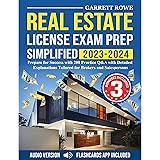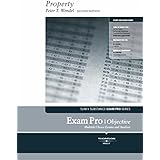The journey to building substantial wealth through real estate remains highly achievable in 2025, despite prevalent market anxieties regarding elevated prices and interest rates. As discussed in the accompanying video, successful real estate investing fundamentally relies on a proven four-step blueprint, not on perfect market conditions. This detailed guide unpacks each critical stage, providing actionable insights for aspiring investors to navigate the current landscape and establish a thriving property portfolio.
Dispelling Market Myths: The Enduring Opportunity in 2025 Real Estate
Many individuals believe current market dynamics have made finding lucrative real estate deals an impossibility. This perspective often stems from comparing today’s environment with past periods, particularly the era when the median U.S. home price hovered around $250,000 and 3% mortgages were standard. Today, the median home price has climbed significantly, often reaching $430,000, and securing a 7% interest rate is considered fortunate.
However, the core principles of successful real estate investment have not changed. Critical opportunities still exist for purchasing properties with modest 3% down payments and engaging in house hacking strategies. Deeply discounted properties, potentially 20%, 30%, or even 50% below market value, are still available for those who know where to look. The challenge is not market scarcity, but rather the visible nature of these opportunities, often obscured for those who have ceased actively seeking them. This persistent negativity mirrors the skepticism encountered decades ago, underscoring that while numbers fluctuate, the fundamental strategies for wealth creation through real estate enduringly remain effective.
Step 1: Building a Rock-Solid Financial Foundation for Real Estate Success
Embarking on a real estate investment journey requires a robust financial groundwork, meticulously constructed to satisfy lender requirements and establish credibility. This initial phase involves three interconnected components: optimizing your credit profile, demonstrating consistent job history, and strategically accumulating a down payment.
Optimizing Your Credit Profile Beyond the Score
Lenders evaluate more than just a FICO score; they scrutinize the “story” your credit history narrates. Building a pattern of financial responsibility is paramount. For instance, if possessing a single credit card, proactively opening two additional accounts and utilizing them for routine expenses like groceries and gas, while consistently paying them off, cultivates a positive spending and repayment narrative. This disciplined approach signals low risk to financial institutions, fostering trust essential for future financing endeavors. It’s about demonstrating consistent, reliable money management.
Establishing a Consistent Job History
A stable employment record serves as a primary indicator of your capacity to manage mortgage payments. Lenders typically prefer to see a two-year consistent work track record. This stability assures them of reliable income streams. A noteworthy tip for recent graduates is that some banks will consider full-time college enrollment as part of your work history if you transition directly into a related field. Maintaining employment, even in a less-than-ideal role for an extra year, can significantly enhance your eligibility for traditional financing, unlocking numerous opportunities.
Strategically Accumulating Your Down Payment
While the prospect of a down payment, often 3% for a first home, can appear daunting, it is an achievable target with strategic planning. For a $300,000 home, this equates to $9,000. Overcoming this hurdle necessitates a shift in spending habits, consciously avoiding discretionary purchases such as dining out or new clothing. The core principle of wealth building, as articulated by the speaker, involves spending significantly less than one earns and diligently investing the surplus. This strategy directly counteracts Parkinson’s Law, where expenses expand to meet income.
Creative income generation is equally vital. Engaging in the gig economy, taking on side hustles, or leveraging specialized skills for additional income streams can drastically accelerate savings. This initial phase is not about immediate comfort; it is a critical period for strategic positioning, ensuring you accumulate the necessary capital to initiate your investment journey effectively.
Step 2: Mastering the Art of Smart Property Acquisition in a Competitive Market
Once your financial foundation is solidified, the next pivotal step involves purchasing your inaugural investment property with discerning intelligence. This means looking beyond superficial appeal and prioritizing financial viability over personal luxury. The objective is to acquire an asset that generates income and builds equity, rather than simply fulfilling a desire for a “nice” primary residence.
Prioritizing Investment Over Lifestyle
When purchasing your first home, resist the temptation to acquire the most aesthetically pleasing or expensive property. True investment acumen lies in identifying properties that offer immediate financial advantage. The speaker’s personal experience, choosing a “crappy little bungalow” and renting out the basement, exemplifies this approach. While a colleague opted for a high-end home, the bungalow became a cash-flowing asset, essentially covering its own mortgage. This strategic decision led to living rent-free, a significant financial accelerator for a nascent investor.
Unearthing Deeply Discounted Properties
Finding properties significantly below market value requires a proactive and unconventional approach. Traditional methods often fall short. “Driving for dollars” – physically scouting neighborhoods for For Sale By Owner signs – can uncover off-market gems. These properties often represent motivated sellers, providing opportunities for substantial discounts. The speaker’s first home, acquired for $110,000 when valued at $150,000, illustrates the power of direct engagement and informed valuation. Leveraging local market knowledge, potentially gleaned from a mentor, is critical for identifying and securing these advantageous deals.
Leveraging the Power of House Hacking
House hacking remains an incredibly effective strategy for minimizing housing costs and building equity rapidly. This involves buying a multi-unit property (duplex, triplex) or a single-family home with a rentable basement or spare rooms, and living in one portion while renting out the others. The rental income generated by tenants directly offsets or entirely covers your mortgage payment. This strategy allows investors to live rent-free or significantly reduce their housing expenses, freeing up capital for further investments or savings. It may not be glamorous, but it is a powerful catalyst for financial independence and portfolio growth.
The Indispensable Role of Mentorship
Navigating the complexities of real estate investing, especially in a dynamic market, is significantly eased with expert guidance. A mentor provides invaluable insights, market intelligence, and strategic advice, helping you identify and evaluate deals effectively. The speaker attributes his early successes directly to his mentor, who guided him on everything from credit building to identifying undervalued properties. Mentors reveal where to look and what to look for, transforming what seems invisible to others into clear opportunities. Acquiring foundational knowledge through reputable resources, such as books or educational programs, often serves as the initial step towards connecting with a mentor or coach who can provide personalized guidance.
Step 3: Leveraging Equity for Accelerated Portfolio Expansion
Once you’ve successfully acquired your first property and built some initial equity, the next strategic step involves leveraging that equity to finance further investments. This iterative process is a cornerstone of rapid portfolio expansion, allowing your existing assets to fund your next acquisitions without requiring substantial new capital contributions.
Harnessing Home Equity Lines of Credit (HELOCs)
A Home Equity Line of Credit (HELOC) is a flexible, revolving credit line secured by the equity in your home. It functions similarly to a credit card, but with a significantly lower interest rate and a much higher borrowing limit, drawing directly from your home’s accumulated value. After owning his first home for just a year, the speaker discovered a substantial increase in equity, not just from his initial below-market purchase but also from natural appreciation. He secured a $20,000 HELOC, effectively converting his home’s dormant equity into accessible capital.
This HELOC then became the funding source for his second property. Instead of starting from scratch with a new down payment, the equity in the first house provided the necessary capital, allowing for the acquisition of a second property with no out-of-pocket expenses. This is a powerful, repeatable strategy. Banks continue to offer HELOCs, making this an active and viable tool for investors in 2025. Leveraging this equity allows you to purchase subsequent properties, dramatically accelerating your investment timeline.
Capitalizing on an “Equity-Rich” Landscape
America’s current financial landscape is characterized by a significant paradox: many homeowners are “cash poor” but “equity rich.” Data indicates trillions of dollars in accumulated home equity across the nation, with the average American homeowner possessing approximately $304,000 in equity. Banks are often willing to lend a substantial portion of this, sometimes $100,000 or $200,000, through HELOCs. This vast pool of untapped capital represents a massive opportunity for existing homeowners to transition into real estate investing.
Even if you perceive your current home as purely personal and not an “investment property,” the equity it holds can be strategically accessed. Approaching a credit union or bank for a HELOC allows you to unlock this wealth, providing the down payment for your first dedicated investment property. This blueprint demonstrates how to utilize existing assets to foster exponential growth, converting dormant equity into active, income-generating real estate.
Step 4: Cultivating an Unwavering Investor’s Mindset and Taking Decisive Action
Ultimately, sustained success in real estate, particularly in a challenging market, hinges less on external conditions and more on an internal mindset of adaptability, resilience, and decisive action. Blaming market factors like high prices or steep interest rates, as many do, traps individuals in a cycle of inaction and missed opportunities.
Overcoming Indecision and “Victimhood”
The primary barrier for most aspiring investors is not a lack of resources or market opportunities, but rather pervasive indecision. Waiting for “perfect” conditions—lower prices, a Federal Reserve pivot, or external permission to act—is a form of relinquishing personal power. This “victimhood” mindset ensures stagnation. True investors, conversely, operate on a principle of taking back control, making a conscious decision to engage, and starting their journey without delay. This proactive approach acknowledges that while market conditions evolve, a proven process and blueprint can consistently yield results.
Adapting and Acting in Uncertainty
The most successful investors do not require ideal market conditions. They thrive on having a clear process and a reliable blueprint that works across various economic cycles. The speaker’s own track record of over 6,500 deals and $2 billion in transactions, spanning both up and down markets, demonstrates the efficacy of a consistent strategy. Delaying action while waiting for an economic turnaround means falling behind those who embrace uncertainty. The greatest gains are often made by those who are willing to “lean in” when others “lean away,” displaying creativity and an unwavering belief in possibility.
This powerful mindset is the cornerstone of any effective 2025 real estate plan. It involves believing in the possibility of success, then diligently finding the way, every single time. By adopting this proactive, adaptive, and mentor-guided approach, aspiring investors can confidently move forward, transforming market challenges into lucrative opportunities and building substantial real estate wealth.









